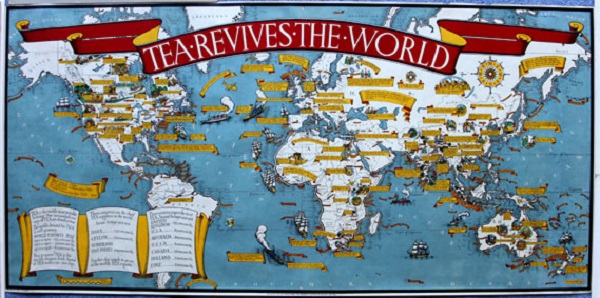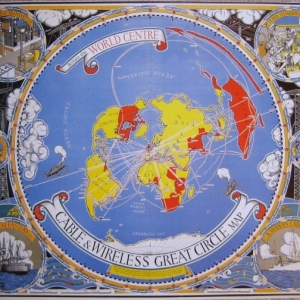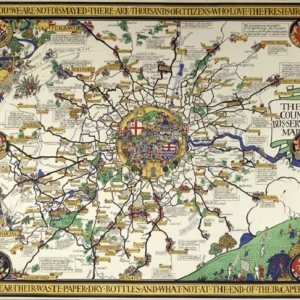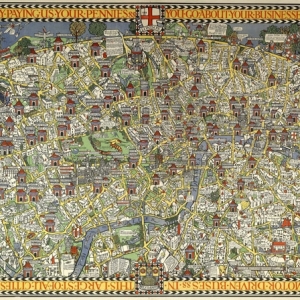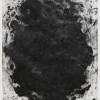Max carried out a range of commissioned pieces for Time and Tide magazine throughout the early part of the 20th Century and enjoyed a great degree of popularity before the Second World War. His successful works included a pictorial map of the Atlantic Charter, 1942, complete with cuttings of Churchill and Roosevelt’s signatures. His black and white map with intricate drawings of industrial labour and trade boats serves as an accurate historical document, as well as a work of art. The words of the Atlantic Charter beam out across the map of the world, portraying an era of profound change. A modified version appeared six years later, entitled ‘The Time and Tide Map of the United Nations’. With the addition of colour, the stunning map suggests a brighter future for the post-War world.
The graphic designer’s work captures a social and political history. His humourous and colourful poster for the London underground, ‘Wonderground Map of London Town’, brightened up the tunnels of the tube in 1914. The map is striking in its detail, with little figures and stories filling the streets of the capital. It create an impression of the busy city which Londoners can continue to relate to a century on. Max’s 1940’s work marking the expansion of the tea industry are equally charming. The history of the nation’s favourite drink is portrayed in his posters, commissioned by the Tea Market Expansion Board. ‘Tea Revives the World’ shows the trade of what we now consider to be a quintessentially British drink, highlighting its relevance all over the world.
This second ever retrospective of the graphic artist’s work is a fantastic collection of both his initial sketches and final pieces. Max’s smaller pieces such as book covers are on show, as well as his larger, more memorable works. A small collection of his tools also provides an insight into the life of a man who captured in ink a period of the world’s most significant change. It is a history lesson in an art exhibit – one which designers, geographers and tea lovers alike can find pleasure in.
